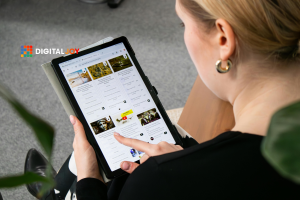In a world of constant feedback, live polling has emerged as a powerful tool for engaging audiences during events, webinars, and presentations.
But not all polls are created the same. Crafting effective poll questions is crucial to maximize the impact and foster meaningful interactions. In this guide, we’ll delve into the art of live polling, offering insights on creating compelling poll questions and how the right polling software can elevate your engagement strategies.
Understanding Live Polling
Live polling is more than just a data collection tool; it’s an interactive experience that involves your audience in real-time. Whether you’re conducting a virtual event or an in-person seminar, live polling enhances participant engagement, promotes interactivity, and provides valuable insights into audience opinions.
A Guide to Crafting Effective Poll Questions
In order to gain good responses, you need to craft effective questions. Here are some tips on how:
1. Be Clear and Concise.
Clarity is paramount when crafting poll questions. Ensure that your questions are straightforward and easily understandable, allowing participants to respond quickly without confusion.
- Example: “What is your preferred method of learning: a) Visual aids, b) Hands-on activities, c) Lectures?”
2. Stay Relevant to the Topic.
Keep your poll questions directly related to the content or theme of your presentation. This ensures that responses contribute to the overall discussion and maintain participant interest.
- Example: “In today’s discussion on marketing trends, how important do you find influencer collaborations? a) Very important, b) Somewhat important, c) Not important.”
3. Incorporate Open-Ended Questions.
Incorporating a few open-ended questions adds depth to your live polling. While multiple-choice questions are effective, allowing participants to express nuanced opinions fosters richer discussions. Just limit the number so the data isn’t overwhelming!
Example: “What challenges do you face in your current project? Please share your thoughts.”
4. Use Audience-Centric Language.
Tailor your poll questions to resonate with your audience. Use language familiar to them, ensuring that questions reflect their perspectives and experiences.
- Example: “As a content creator, what type of topics would you like more insights on? a) Social media strategies, b) Content creation tools, c) Audience engagement.”
5. Provide Limited Options.
On non-open ended questions, provide a manageable number of response options to avoid overwhelming participants. This facilitates quick decision-making and a more efficient polling process.
- Example: “Which social media platform do you primarily use for business: a) Facebook, b) Instagram, c) LinkedIn.”
6. Stay Neutral
While it might be tempting to ask leading questions like, “How awesome are we? Pick how awesome!” it’s important to create unbiased poll questions in order to get accurate feedback.
- Example: “Rate our customer service on a scale of 1-10”
7. Don’t Ask Two Questions at Once
The last thing you want to do is confuse your audience. Asking a question like, “How would you rate our response times and general customer service”, break it into two questions.
- Example: “How would you rate our general customer service”? and “How would you rate our service response times?”
The Role of Polling Software
Good polling software enhances the live polling experience by simplifying the process of creating and managing polls. These tools offer user-friendly interfaces, customization options, and real-time data tracking. Here’s how you can leverage polling software for effective live polling:
Quick Poll Creation:
Polling software typically provides intuitive interfaces that allow you to create polls swiftly. Some will include a “wizard” function that will have presets and quick set-up. This allows you to quickly input your questions, set response options, and customize the appearance of your polls effortlessly.
Real-Time Interaction:
Good polling software allows you to engage audiences and see responses instantaneously. This dynamic interaction keeps participants actively involved throughout your presentation or event and gives you key insights on the fly.
Versatility in Question Types:
Take advantage of the diverse question types offered by polling software. Mix multiple-choice questions with open-ended queries to capture a comprehensive view of audience opinions.
Audience Feedback Analysis:
Free polling software often includes analytics features that enable you to analyze audience feedback promptly. Use this data to adapt your content, address audience concerns, and tailor your presentation on the fly.
Integration with Various Platforms:
Look for polling software that seamlessly integrates with popular platforms, such as Zoom or PowerPoint. This ensures a smooth experience for both presenters and participants.
Voting Options:
Polling software with various voting options for users can make a difference. You will want to choose software that allows voting online, via a phone web app, via SMS, with QR codes, etc.
Mastering the art of live polling involves crafting questions that resonate with your audience and utilizing user-friendly tools like polling software. By following the guidelines for effective question creation and leveraging the capabilities of these tools, you can transform your presentations, webinars, or events into dynamic, engaging experiences that leave a lasting impact on your audience.
Try Digital Joy Engage polling software today! You can try it free for 30 days.




